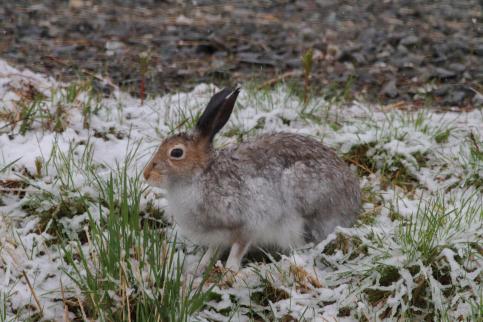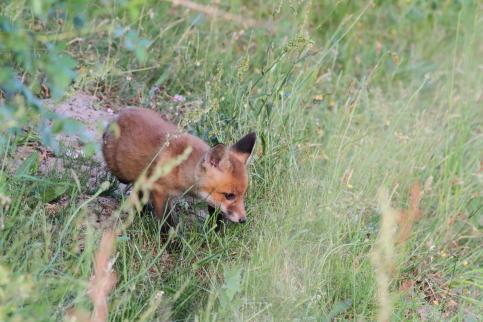Discussion
Since reporting is voluntary for most common felled game, the number of reports can vary between hunting teams, HMP, and counties. There is, therefore, a demand for statistical methods to estimate harvest in Sweden. The results from this study show that the covariates model ranked highest for all ten species, and out of the ten species, six had an ELPD difference of two to four, which implies that there is both strong and week support that the covariate model will be a better predictor for other datasets than this one. At least one covariate had an apparent effect on harvest estimates for nine out of ten species. In addition, the covariate model reduced the large uncertainties, which is an improvement of the null model.

Evaluation of predictive performance
For all nine species, excluding rock ptarmigan, the covariate model estimated a smaller CV (coefficient of variation, a scale-free measurement of the variation) and a 95 % credible interval than the null model, indicating that the large uncertainties were removed by including covariates in the model, and hunting estimates became even more precise.

Evaluation of 95 % credible interval
The unexpected effects from covariates include, for example, that agricultural land had a positive effect on harvest for beaver, i.e., the more farmland land, the more beavers are felled in HMPs. One explanation could be that there is a higher abundance of beaver populations in southern Sweden, where there are larger agricultural land areas than in the northern parts of Sweden.
Two models were tested for wild boar, with wildlife accidents, and without wildlife accidents. The number of covariates varied from 12 (including wildlife accidents) to 10 (excluding wildlife accidents). One hypothesis was that including wildlife accidents in the model would substantially affect other covariates since it is a strong predictor since if there is a high abundance of wild boar in an HMP, it is more likely that there is an increase of wildlife accidents. However, the wildlife accidents covariate results showed a negative effect on the harvest estimates, which might seem like a contradiction as a higher abundance of wild boar should increase the risk for accidents. Another contradictory result was that water had a positive effect, while coastline for sea/lake and river had a negative effect. One possible explanation for these results is that there could be a correlation between covariates, that they are very alike, contributing to a complicated composition of several factors.
Conclusions
In this study, I assessed and expanded a model for estimating the relevance of covariates for harvest estimation of felled game. Furthermore, a model for predicting felled game using parameters such as land cover, geographical distribution, and climate variables was produced. This prediction model is essential as the reporting for felled game is voluntary in countries like Sweden, and there is a problem with low reporting. Modern statistics can help harvest estimates which can serve as an essential factor for maintaining wildlife populations to intertwine with preservation biology.
This study aimed to improve the current estimation method, and by including covariates at the HMP level, this study has developed a framework for studying the effect of climate, land cover, and geographical distribution on harvest estimation. Second, this study suggests that harvest estimates can be improved by taking these factors (covariates) into account. Based on LOO-CV and the 95% credibility interval, which did not include zero for the remaining covariates, it can be said that the covariate model is a better model than the null model for nine out of ten focal species. To conclude, by taking covariates into account as the finest spatial resolution that can be considered from the available data, instead of only using HMP as the finest scale, the covariate model reduced the predictive variation. Using covariates at the precinct level, models for estimating hunting harvest will be more robust and reliable, which is essential for managing wildlife.
Responsible for this page:
Director of undergraduate studies Biology
Last updated:
05/28/21
